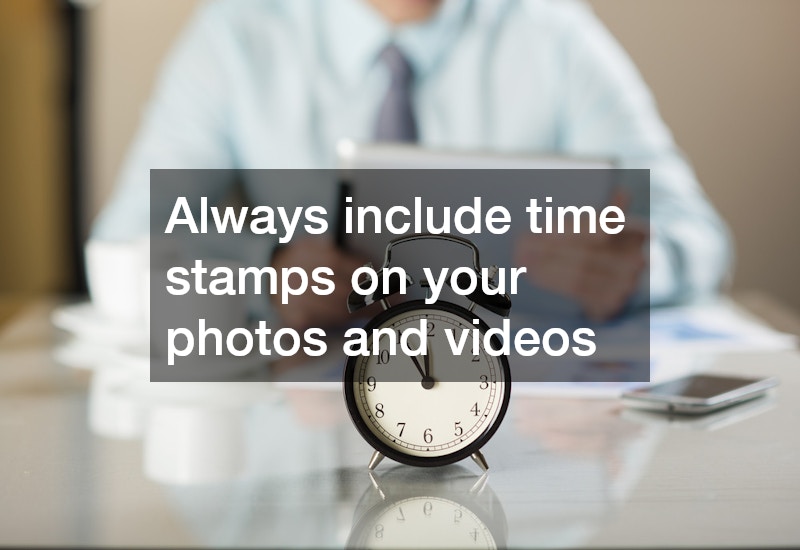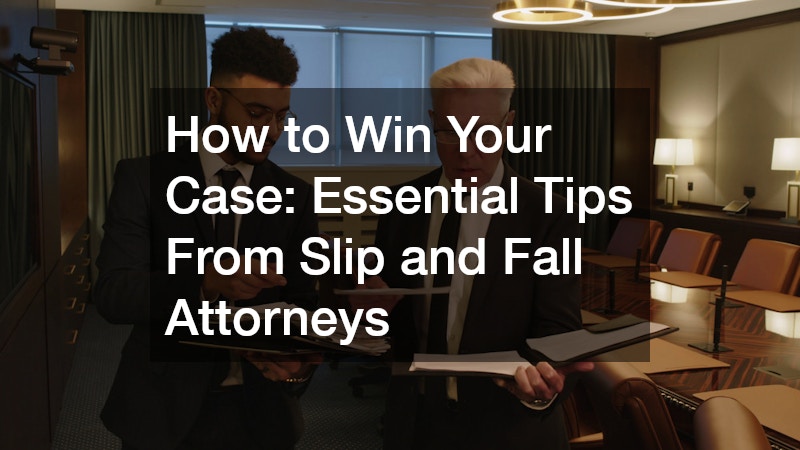
In slip and fall cases, having the right strategy can make all the difference. These types of personal injury accidents, often occurring unexpectedly, can leave individuals dealing with significant physical and emotional stress. By learning from experienced slip and fall attorneys, you can maximize your chances of winning your case through understanding key legal principles and gathering necessary evidence.
This detailed guide will explore the critical aspects you need to cover to increase your odds of victory. Whether it’s gathering important evidence, understanding the concept of liability, or knowing the steps to take post-accident, having a clear roadmap is essential.
Navigate the complexities with the help of seasoned legal minds who have steered many to success.
What Evidence Do I Need to Gather for a Slip and Fall Case?
In the immediate aftermath of a slip and fall incident, it is crucial to document the scene thoroughly. Photos and videos that capture the conditions leading to your fall serve as invaluable pieces of evidence. Failing to document the scene promptly can result in loss of crucial proof as hazards could be fixed or altered afterward.
Ensure to capture multiple angles to showcase the whole environment, the specific hazard, and its relationship to other elements in the area. This comprehensive evidence enables your attorney to recreate the situation accurately. The imagery can highlight aspects like poor lighting, wet floors, or tripping hazards that might not be obvious at first glance.
Always include time stamps on your photos and videos to create a clear timeline of events. The time element can demonstrate how long a hazard might have been unattended, which plays an important role in proving negligence and notice. By assembling the right evidence package, you lay the groundwork for a strong case against the responsible party.
Witnesses can significantly bolster your slip and fall case by corroborating your claims. Statements from impartial observers can enhance the credibility of your provided evidence, painting a clearer picture of the incident’s sequence. It is best to collect their information immediately while the incident is still fresh in their minds.
When gathering witness statements, aim to record them in writing, capturing essential details accurately. The statements should address what the witness saw, heard, and any observations they made around the conditions of the area. These accounts can help demonstrate the presence of hazardous conditions that were not addressed by the property owner.
How Can I Prove Liability in a Slip and Fall Case?
Establishing negligence is a cornerstone of proving liability in a slip and fall case. To do this, you must demonstrate that the property owner acted irresponsibly or failed to act in a reasonable manner to prevent harm. This typically involves proving that the owner had a duty to maintain a safe environment and breached this duty.
Negligence can be shown by illustrating how a hazard was known and ignored or not addressed in a timely manner. In many jurisdictions, laws provide a framework for what constitutes reasonable behavior by property owners, which your attorney can use to demonstrate negligence. Understanding this legal framework is essential for building a strong argument.
Your attorney will assess factors like maintenance schedules, incident reports, and compliance with relevant safety standards. By piecing together evidence of neglect, such as past complaints or inadequate safety measures, you can show negligence. Successfully proving negligence is pivotal to holding the property owner accountable for your slip and fall accident.
Central to proving liability is showing the presence of dangerous conditions that led to your slip and fall. These conditions can vary widely, from wet floors without warning signs to uneven surfaces or cluttered pathways. Identifying these hazards provides a foundation for arguing that they were inadequately managed.
Provide evidence that these hazardous conditions were present long enough that the property owner should have been aware of them and taken corrective action. Defining ‘foreseeability’ is crucial; documenting the extent to which these conditions were not addressed helps indicate negligence. Whether through security footage, previous incident reports, or eyewitness accounts, demonstrating dangerous conditions is key.
What Steps Should I Take After a Slip and Fall Accident?
After a slip and fall accident, prioritizing medical attention is crucial for both health and legal reasons. Seeking medical care promptly ensures that all injuries are addressed and documented by professionals, establishing a clear link between the accident and your injuries. Ignoring or delaying medical assessments could weaken your case and worsen health outcomes.
Medical documentation captures details of the incident’s impact on your physical state, assisting in demonstrating the accident’s severity. This could range from minor injuries to complications like fractures or concussions, all noted in medical records. Documenting immediate care and subsequent treatments builds a timeline crucial for demonstrating the incident’s impact.
The presence of medical professionals’ assessments and recommendations strengthens your legal stance by confirming the presence and extent of injuries. These records can also aid in calculating compensatory amounts needed for current and future medical expenses. Partnering with healthcare professionals early on serves your health needs and grounds your legal narrative in tangible evidence.
Reporting a slip and fall accident to the property owner or manager is a critical step in laying down an official record of the event. This report creates a paper trail necessary for any legal or insurance claims, highlighting your commitment to addressing the accident responsibly. An incident report details the time, date, and specifics of the fall, and identifies witnesses and observed hazards.
It is crucial to approach slip and fall cases with a clear strategy and understanding of the processes involved. Rapidly gathering and preserving evidence ensures that you maintain the ability to articulate your claims effectively. A methodical and informed approach places you in a position of strength during negotiations and court proceedings.
Slip and fall cases can be complex and challenging, but with the right guidance and preparation, you can navigate them confidently. Collaborate with legal professionals to maximize your legal options, and commit to a thorough understanding of the evidence and liabilities. Your proactive efforts are key to achieving a successful resolution in your slip and fall case.

